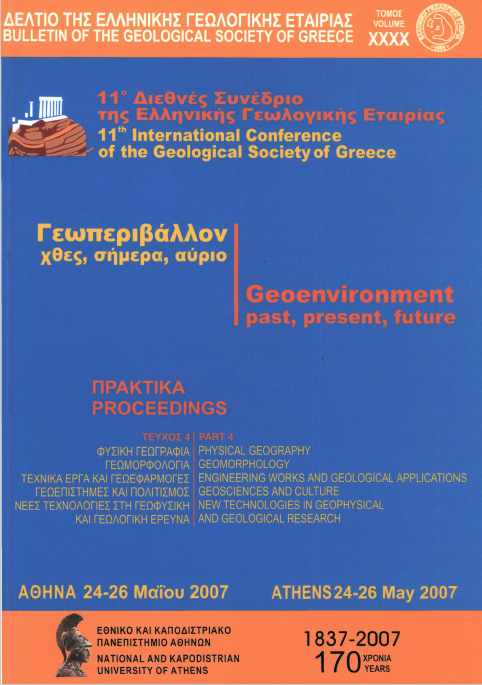DIAGENESIS OF THE MARLY-GYPSUM FORMATIONS, IGOUMENITSA AREA, N.W. GREECE
Résumé
The Igoumenitsa area, in northwestern Greece, is composed of organic-rich clay evaporitic formations, of the Ionian zone. They have undergone diagenetic processes, which effect the mineralogical transformations. The purpose of this paper is the study of the mineralogical diagenesis and the possible implications to the geotechnical behavior of these organic-rich clay evaporitic sedimentary rocks. The diagenetic minerals reported in this study are: A: The authigenic swelling clay minerals, smectite and mixed layers of smectite. B. The two characteristic minerals phases of the sulfate diagenesis: I. Bassanite (semi hydrated gypsum-Ca04.l/2H20) and 2. Celestite (SrS04) that can be considered as an indicator of bacterial sulphate reduction, fluid flow and recycling ofevaporites. The two authigenic minerals have derived from the evaporites, mostly by the dehydration of gypsum and by the action of pore water that is charged with the ions derived from the dissolution of preexistent sulfates, halite and carbonates. C. The neoformation of the carbonate minerals aragonite and dolomite, due to probably bacterial sulfate reduction. When organic-clay rich sediments, are associated to evaporites, the diagenetic processes become more complex and interacted. The diagenetic alterations of the gypsum/anhydrite rocks are related to the geotechnical behavior of the formation and may lead to possible karstiflcation. That may cause problems in roads and tunnels construction on or through these evaporitic series
Article Details
- Comment citer
-
Tsipoura-Vlachou, M. (2007). DIAGENESIS OF THE MARLY-GYPSUM FORMATIONS, IGOUMENITSA AREA, N.W. GREECE. Bulletin of the Geological Society of Greece, 40(2), 1009–1021. https://doi.org/10.12681/bgsg.16783
- Rubrique
- Mineralogy-Petrology-Geochemistry-Economic Geology

Ce travail est disponible sous licence Creative Commons Attribution - Pas d’Utilisation Commerciale 4.0 International.
Authors who publish with this journal agree to the following terms:
Authors retain copyright and grant the journal right of first publication with the work simultaneously licensed under a Creative Commons Attribution Non-Commercial License that allows others to share the work with an acknowledgement of the work's authorship and initial publication in this journal.
Authors are able to enter into separate, additional contractual arrangements for the non-exclusive distribution of the journal's published version of the work (e.g. post it to an institutional repository or publish it in a book), with an acknowledgement of its initial publication in this journal. Authors are permitted and encouraged to post their work online (preferably in institutional repositories or on their website) prior to and during the submission process, as it can lead to productive exchanges, as well as earlier and greater citation of published work.





